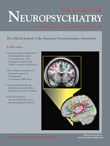Association of Familial Ataxia and Restless Legs Syndrome
SIR: Restless legs syndrome (RLS), characterized by an intense urge to move the lower extremities especially during the night, is associated with a number of medical conditions, such as uremia, iron deficiency, and neuropathy. RLS with a prevalence of 5% to 15%, is frequently underdiagnosed 1 – 3 and can be confused with anxiety states and other psychological syndromes, hyperthyroidism and drug-induced akathisia. Previous reports have highlighted an association between RLS and familial spinocerebellar ataxias (SCA) in German and Dutch patients. 2 – 5 However, the long-term association of these two conditions is unknown. The prevalence of RLS is much rarer among Asians, 6 and to our knowledge, RLS has not been reported in SCA patients in Asia.
Here, we report an Asian patient with SCA who presented with restless legs symptoms that were initially attributed to stress and anxiety. We examined the relationship between RLS and SCA symptoms in this patient over a few years to highlight the need to recognize their coexistence early since RLS could be effectively treated.
Case Report
The patient of Asian origin presented with progressive unsteady gait and frequent falls. He had signs of cerebellar dysfunction, generalized hyperreflexia and lower limb spasticity, and was confirmed to have autosomal dominant SCA type 3 (SCA3), with an abnormal CAG trinucleotide repeat expansion. One year after the onset of his ataxia, he complained of an urge to move his lower extremities, particularly when at rest. This was preceded by an abnormal sensation in his toes and feet, which at times extended to his knees, described as “crawling,” “creeping,” and “itching.” He was troubled and anxious because the urge and sensation were often intense and distressing, and he had to move his legs and get up to walk to obtain relief. He was more aware of his symptoms during quiet time in the evening or night and when not distracted by other activities. He frequently woke up more than 10 times nightly because of sensation associated with restless legs and complained of poor sleep quality. His symptoms were initially attributed to his anxiety and depression and treatment for these symptoms was not effective. Subsequently, he was diagnosed with RLS based on the International Restless Legs Syndrome Study Group criteria. 5 After L -dopa was prescribed, his symptoms improved significantly. Investigations did not reveal a secondary cause for his RLS. Full blood count, urea/creatinine/electrolytes, and serum ferritin levels were normal. A nerve conduction test did not reveal any significant peripheral neuropathy. He was followed up over a 3-year period. His RLS symptoms appeared to progress with deterioration of his ataxia symptoms but could be controlled with L -dopa. His RLS symptoms would reemerge with withdrawal of the medication.
Comment
RLS was most likely related to the patient’s ataxia condition as the patient did not have any past or family history of RLS, his symptoms came only after the onset of his ataxia, and the clinical severity of both diseases appeared to move in tandem over a long period of time. Investigations did not reveal any evidence of anemia, renal failure, peripheral neuropathy, or arthritis, conditions which may predispose to RLS symptoms.
Functional imaging studies have provided evidence implicating dopaminergic system impairment in RLS. Similarly, striato-nigral involvement has been demonstrated in neuropathological specimens of SCA3. Hence, it is possible that SCA3 and RLS may share a common pathophysiological mechanism. RLS and sensorimotor axonal neuropathy have been associated with intermediate CAG repeat size (53 and 54 repeats) in an SCA3 Dutch family. 5 Our RLS patient had an abnormal CAG repeat size (>60 repeats) and no neuropathy. Whether there is a correlation between the size of the CAG repeat expansion and the risk of RLS symptoms is not known.
RLS symptoms can be confused with stress and anxiety in patients with familial SCA. The long-term follow-up of our patient supports the association of RLS and SCA reported in Caucasian patients. We need to recognize RLS early, even in Asian populations where RLS is apparently rare so that appropriate effective treatment can be instituted. Further studies into the pathophysiological link between RLS and SCA3 would be of academic interest.
1. Walters AS: Toward a better definition of restless legs syndrome: The International Restless Legs Syndrome study group. Mov Disord 1995; 10:634–642Google Scholar
2. Tan EK, Ondo W: Restless legs syndrome: clinical features and treatment. Am J Med Sci 2000; 319:397–403Google Scholar
3. Abele M, Burk K, Laccone F, et al: Restless legs syndrome in spinocerebellar ataxia types 1, 2, and 3. J Neurol 2001; 248:311–314Google Scholar
4. Schols L, Haan J, Riess O, et al: Sleep disturbance in spinocerebellar ataxias: is the SCA3 mutation a cause of restless legs syndrome? Neurol 1998; 51:1603–1607Google Scholar
5. van Alfen N, Sinke RJ, Zwarts MJ, et al: Intermediate CAG repeat lengths (53,54) for MJD/SCA3 are associated with an abnormal phenotype. Ann Neurol 2001; 49:805–807Google Scholar
6. Tan EK, Seah A, See SJ, et al: Restless legs syndrome in an asian population: a study in Singapore. Mov Disord 2001; 16:577–579Google Scholar



